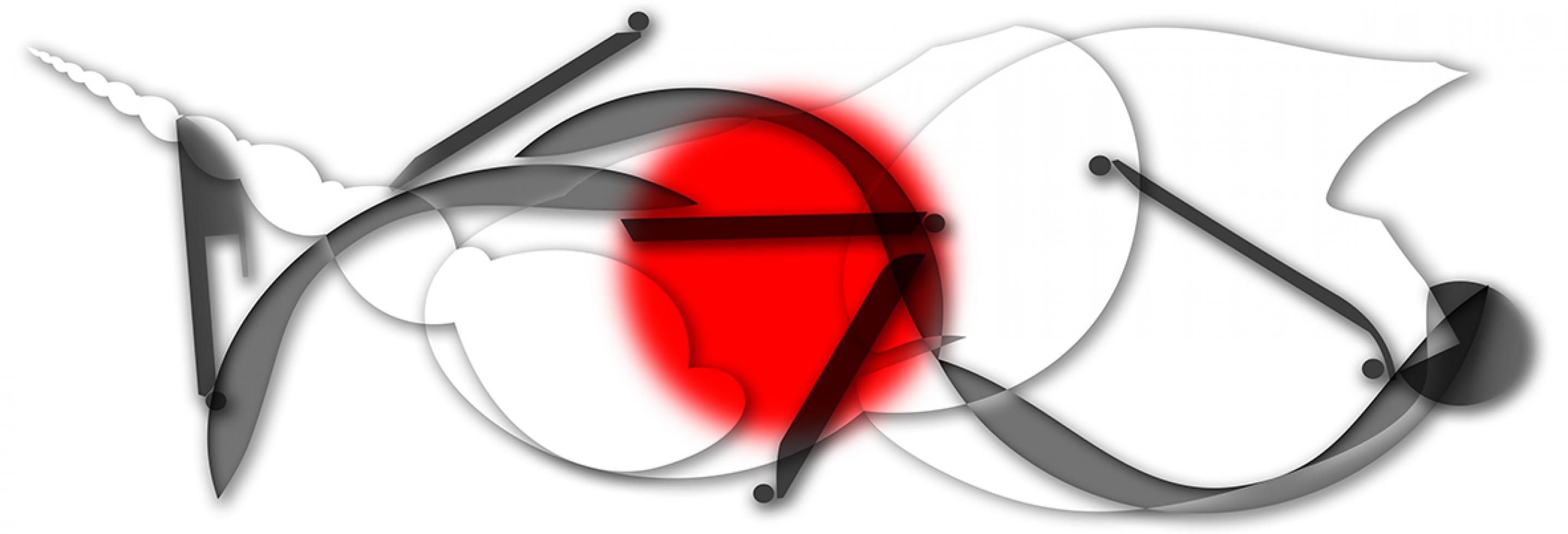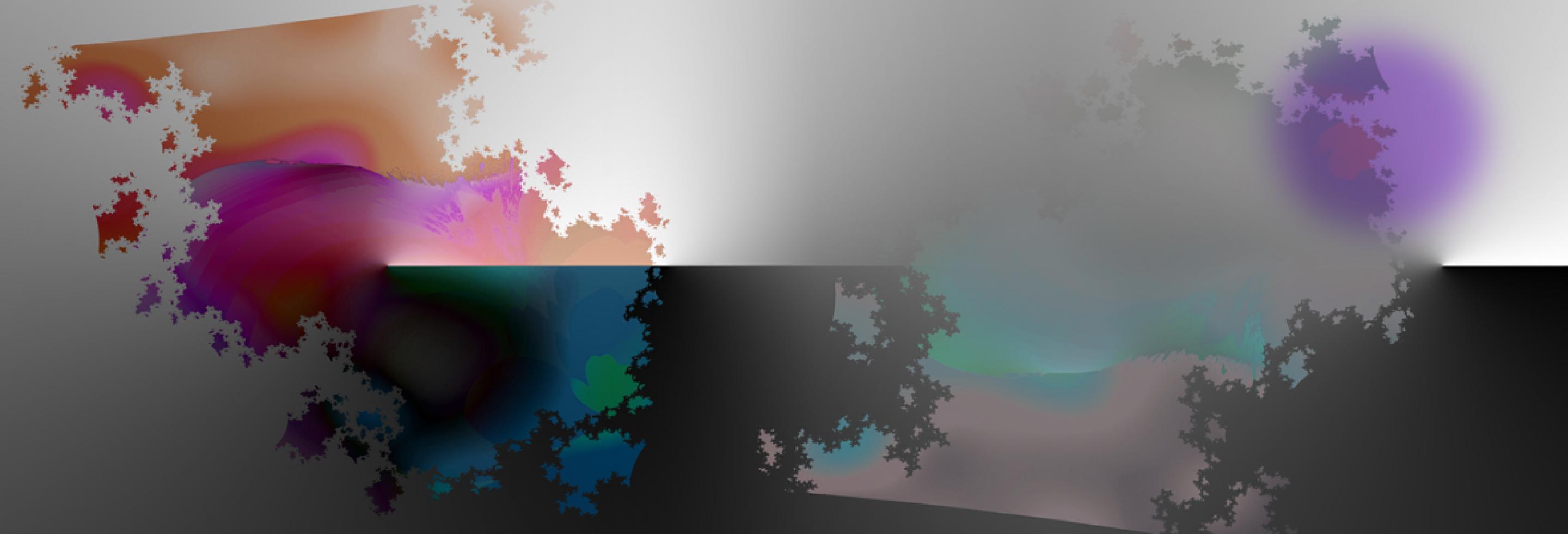Press Release
Bruno Di Bello
Opening: November 17, 2015
November 18, 2015 – January 23, 2016
Opening: November 17, 2015
November 18, 2015 – January 23, 2016
The Marconi Foundation is pleased to announce an exhibition dedicated to Bruno Di Bello with a group of works created by the artist over the past five years.
Displayed on the ground floor of the exhibition space will be a series of new works, studies and later variations of the five large triptychs executed in 2010 for the exhibition held at the Niteroi Contemporary Art Museum in Rio de Janeiro.
"When I received the photos and map of the museum, designed by Oscar Niemeyer, I became fascinated by the beauty of the building, a true architectural gem, and the idea immediately came to me to use the signs on the plan indicating the five walls and the columns for the first of my triptychs. The hexagonal room, centred on the circle of external windows, reminded me of the shape of the countless rooms in the imaginary 'Library of Babel' described by Jorge Luis Borges: a hexagon with five walls and one side open as an entrance. (Coincidence or reference?) Precisely the museum room I’d imagined for my five triptychs. This led to With Oscar, the first triptych on show, with a series of variations in which the signs of the separate walls, punctuated by the columns that support the upper structure, communicate with my signs derived from fractal geometry in the various solutions on show in this exhibition." (Bruno Di Bello)
These digital abstractions represent a sort of profound renewal in relation to Bruno Di Bello’s artistic experiments of previous years and to the tradition of “off camera” photography.
They have come after a long period of reflection, during which the artist – who already in the late Eighties had pioneered the replacement of his darkroom with digital hardware and software – was able to devote himself to the study of the new technologies, and in particular to digital photography, which in the interim enabled him to become an expert in computerised image creation and processing techniques.
Displayed on the ground floor of the exhibition space will be a series of new works, studies and later variations of the five large triptychs executed in 2010 for the exhibition held at the Niteroi Contemporary Art Museum in Rio de Janeiro.
"When I received the photos and map of the museum, designed by Oscar Niemeyer, I became fascinated by the beauty of the building, a true architectural gem, and the idea immediately came to me to use the signs on the plan indicating the five walls and the columns for the first of my triptychs. The hexagonal room, centred on the circle of external windows, reminded me of the shape of the countless rooms in the imaginary 'Library of Babel' described by Jorge Luis Borges: a hexagon with five walls and one side open as an entrance. (Coincidence or reference?) Precisely the museum room I’d imagined for my five triptychs. This led to With Oscar, the first triptych on show, with a series of variations in which the signs of the separate walls, punctuated by the columns that support the upper structure, communicate with my signs derived from fractal geometry in the various solutions on show in this exhibition." (Bruno Di Bello)
These digital abstractions represent a sort of profound renewal in relation to Bruno Di Bello’s artistic experiments of previous years and to the tradition of “off camera” photography.
They have come after a long period of reflection, during which the artist – who already in the late Eighties had pioneered the replacement of his darkroom with digital hardware and software – was able to devote himself to the study of the new technologies, and in particular to digital photography, which in the interim enabled him to become an expert in computerised image creation and processing techniques.
In these works, Di Bello creates a virtual universe derived from a mathematical model, but one in which he intervenes by deciding which variable to introduce into the automatic process of iconic generation and proliferation.
Having learned about the theories of mathematician Benoît Mandelbrot, in the Nineties the artist began to study fractal geometry.
In the late Seventies, Mandelbrot conceived that forms found in nature and considered the result of chance (the beauty of orchids, the jaggedness of coastlines, the shape of clouds…) could be described by a geometry based on a mathematical calculation, and that similar forms could be recreated by means of a complex system of computer-solved equations.
Fractal mathematics and geometry have been applied in the most varied fields of knowledge: from mapping to forecasting stock market movements and from architectural design to astrophysics, but Di Bello recalled that in the history of art, whenever geometry changed, art and architecture changed too, and that since the Fifties musicians have been using electronic instruments for their compositions, and that since the Seventies, architects have replaced the drawing board and pencil with computers.
Many years ago, even Paul Klee – a constant reference point for Di Bello – researched the relationship between geometry and nature’s forms through various experiments and exercises in the lessons he taught at the Bauhaus).
The philosopher Mario Costa has described the artist’s work in the following way: "Bruno Di Bello has understood that the limit of the aseity of an image, due to its logical and therefore mental nature, equals the limit of whatever he has been searching for his whole life. That is, he has understood that digital images do not refer to any subject or object, that they have no referent whatsoever, and that they themselves must be treated as referents; in other words, as new things he has to contend with on an aesthetic level."
To mark this occasion, Quaderno della Fondazione Marconi no. 18 will be published with an introductory essay by Bruno Cora.
Having learned about the theories of mathematician Benoît Mandelbrot, in the Nineties the artist began to study fractal geometry.
In the late Seventies, Mandelbrot conceived that forms found in nature and considered the result of chance (the beauty of orchids, the jaggedness of coastlines, the shape of clouds…) could be described by a geometry based on a mathematical calculation, and that similar forms could be recreated by means of a complex system of computer-solved equations.
Fractal mathematics and geometry have been applied in the most varied fields of knowledge: from mapping to forecasting stock market movements and from architectural design to astrophysics, but Di Bello recalled that in the history of art, whenever geometry changed, art and architecture changed too, and that since the Fifties musicians have been using electronic instruments for their compositions, and that since the Seventies, architects have replaced the drawing board and pencil with computers.
Many years ago, even Paul Klee – a constant reference point for Di Bello – researched the relationship between geometry and nature’s forms through various experiments and exercises in the lessons he taught at the Bauhaus).
The philosopher Mario Costa has described the artist’s work in the following way: "Bruno Di Bello has understood that the limit of the aseity of an image, due to its logical and therefore mental nature, equals the limit of whatever he has been searching for his whole life. That is, he has understood that digital images do not refer to any subject or object, that they have no referent whatsoever, and that they themselves must be treated as referents; in other words, as new things he has to contend with on an aesthetic level."
To mark this occasion, Quaderno della Fondazione Marconi no. 18 will be published with an introductory essay by Bruno Cora.













